Handsome Prince Henry was not expected to become king, yet he went on to become one of England’s most memorable monarchs – but of what of Henry VIII’s six wives?

The larger-than-life character of King Henry VIII (1509-47) dazzles across the centuries. He founded a national church, transformed government, built a strong Navy and encouraged a flourishing of the arts. He is also remembered for the extraordinary marital merry-go-round that saw him wed six wives in his quest for a male heir (and ideally a spare) to secure the Tudor dynasty on England’s throne.
But what of those six wives, almost hidden in Henry’s monstrous shadow and recalled less by name than by their fates summed up in the well-known rhyme: divorced, beheaded, died, divorced, beheaded, survived? Far from the puppets implied, each is a fascinating flesh-and-blood figure and each dealt differently with Henry and the challenges they faced. The consequences determined the course of royal history.
Henry VIII’s six wives: Catherine of Aragon
The medieval ruins of Ludlow Castle offer an evocative starting place for the wives’ story. For it’s here that the Spanish princess Catherine of Aragon was living with her husband Prince Arthur, elder son and heir of King Henry VII, when Arthur was suddenly taken ill and died in 1502.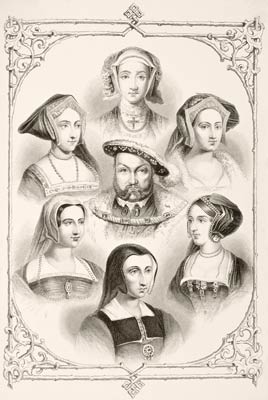
Catherine, the pretty, gracious daughter of Ferdinand of Aragon and his warrior-queen Isabella, had been married to cement a political alliance between Spain and England against France. Now, aged just 16, she was a widow in a foreign land. But Catherine firmly believed in her royal destiny and after seven difficult years, a papal dispensation and a deathbed wish by Henry VII, her patience paid off. She married Arthur’s brother, King Henry VIII in June 1509.
The match reaffirmed the political alliance, but 18-year-old Henry, 6ft 2in tall and “the handsomest sovereign”, was also in love with his diminutive, auburn-haired 23-year-old bride. All bode well and she played the perfect wife and queen, whether devotedly embroidering her husband’s shirts or (ever her mother’s daughter) vigorously supporting Henry in his military pursuits. In 1513 when the king went to fight in France, he made Catherine regent in his absence, a role that she performed with aplomb.
But there was one crucial role in which she failed: to provide Henry with a son and heir. The prince born in 1511 died within a few months and the one surviving child from six or seven pregnancies was a daughter, Mary, which simply would not do. As the queen grew older, she lost her looks and turned increasingly to her Catholic faith and study; Henry turned to mistresses.
Henry VIII’s six wives: Anne Boleyn
Around 1526, the king’s roving eye alighted on one of Catherine’s ladies-in-waiting, Anne Boleyn. The “fresh young damsel” refused to become his mistress, provoking a frenzy of frustrated royal passion. Anne issued a breathtakingly bold ultimatum: she could only surrender to Henry’s advances if he divorced his wife.
The king, believing Anne would provide his male heir, entreated the Pope to declare his marriage to his brother’s wife invalid, but the Pope refused, sparking Henry’s break with Catholic Rome. Nor would Catherine go quietly, declaring her first marriage had never been consummated and she was the sovereign’s ‘true wife’. In May 1533, after nearly 24 years of marriage, Catherine was divorced anyway and reduced to the title Princess Dowager.
Pious and noble to the end, she died in January 1536 at Kimbolton Castle in Cambridgeshire (now owned by Kimbolton School and open to visitors on certain days). In a last letter to Henry, she wrote, “For my part I pardon you everything, and I wish devoutly to pray God that He will pardon you also.” You’ll find her tomb in Peterborough Cathedral, but her ghost lingers at Kimbolton Castle.
Anne Boleyn’s story takes us first to her childhood home, Hever Castle in Kent. Here you can view her portrait and also the Book of Hours (prayer book) she is said to have carried to the scaffold when her royal luck ran out. A dark-eyed brunette, Anne was no conventional beauty, but she was feisty, witty and seductive, with a chic French education acquired while her father worked as a diplomat in Paris.
The Boleyns were an ambitious family and Anne’s sister Mary had already been the king’s mistress. But Anne was the one who shrewdly won the royal hand in marriage, in January 1533 – some four months before Henry’s actual divorce from Catherine. Anne, 32 years old, was already flaunting her pregnancy, although the eagerly anticipated son would turn out to be another girl, Elizabeth.
The new queen was widely reviled as an interloper, a social climber and even a witch (she had a sixth finger on her left hand) who had ensnared the king. People also blamed her for the religious turmoil that Henry’s break with Rome unleashed. Indeed Anne was greatly attracted to the controversial religious ideas behind the Protestant Reformation; coincidentally they served her interests. It was she who had given Henry The Obedience of a Christian Man by William Tyndale that stated the King, not the Pope, should have authority over the Church.
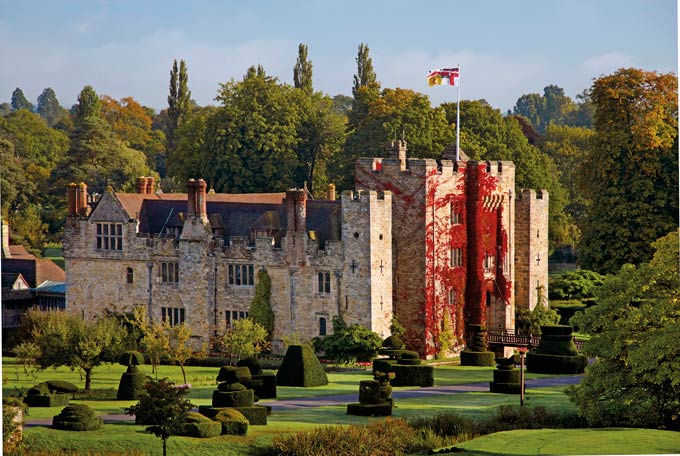
But Anne was playing a dangerous game. Without allies, she fully depended on Henry’s favour, and as pregnancies came and went and no male heir was produced, the king’s favour began to turn elsewhere. The end came three years into her marriage: on 19 May 1536 Anne was beheaded on London’s Tower Green.
Despite the trumped-up charges of adultery and treason, she showed remarkable composure on the scaffold, calling upon Jesus Christ to “save my sovereign and master the King, the most godly, noble and gentle prince that is.” Her headless spirit is said still to appear near Queen’s House and lead a ghostly procession of lords and ladies down the aisle of the Chapel Royal of St Peter ad Vincula where she is buried.
Henry VIII’s six wives: Jane Seymour
Just over a week after Anne’s execution, Henry married Jane Seymour, a former lady-in-waiting to his first two wives. This fair, pale-skinned, blue-eyed woman of respectable birth and standing was demure and virtuous. She was also a committed Catholic and dared to plead with her new husband to abandon the Dissolution of the Monasteries, perhaps hoping he would return to the ‘true faith’.
Her temerity earned her a stern rebuke, but any lingering resentment was swept aside when she gave birth to Prince Edward on 12 October 1537, in the royal apartments at Hampton Court Palace. It’s easy to imagine the king’s pride and relief as the infant was baptised in the sumptuous Chapel Royal.
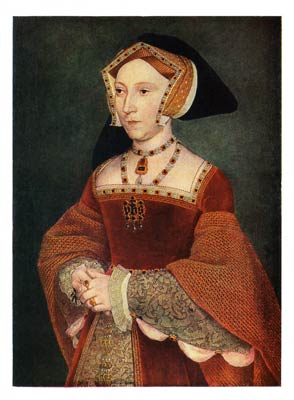
But even in triumph came tragedy. Jane contracted puerperal fever and died shortly after the birth. Of all Henry’s spouses, it is his “most dear and entirely beloved wife” who is buried beside him in St George’s Chapel, Windsor.
Henry VIII’s six wives: Anne of Cleves
Meantime court advisors – and a flattering portrait by Hans Holbein – persuaded the distraught king to take another bride, who would bring with her a German alliance. Anne of Cleves was shipped over, taking the trouble first to study English etiquette and learn card games that Henry played, the better to please him. Unfortunately, when Henry met her in the half-timbered Old Hall behind Rochester Castle he took one look at her full figure and unfashionable dark complexion and bluntly declared: “I like her not.”
The wedding went ahead regardless on 6 January 1540 but Henry, overcome by impotence, never consummated the union. Anne, apparently, didn’t realise anything was amiss. Nevertheless she had the good sense to settle for divorce after six months, a handsome pay-off that included Hever Castle and the title of ‘the King’s good sister’. She never remarried and lived until 1557, a rather sad stranger in a foreign land in her twilight years.
Henry VIII’s six wives: Catherine Howard
Henry, on the rebound, became infatuated with Catherine Howard, the flighty teenage daughter of the powerful Howard family. Her relations, spotting a superb opportunity for advancement, encouraged the match and Catherine, whatever her true feelings about marriage to a fat, 49-year-old king with leg ulcers, acquiesced, becoming his fifth wife in July 1540.
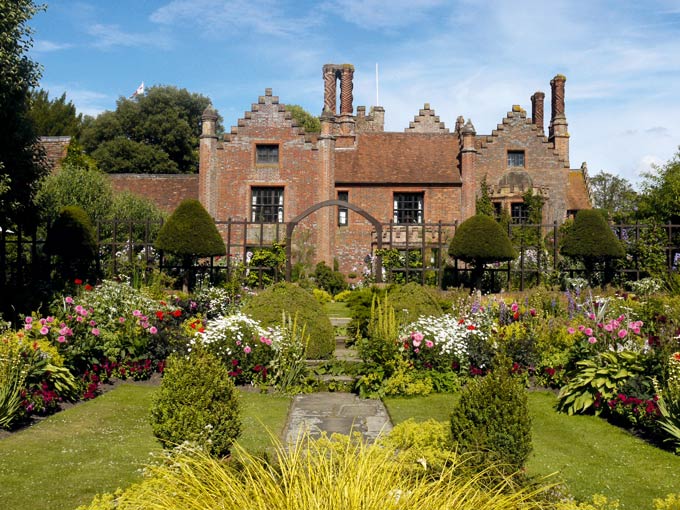
The marriage was over before it began. Licentious by nature, Catherine recklessly took up with a former lover, Thomas Culpeper, a trusted gentleman of the king’s Privy Chamber. Visit Chenies Manor House in Buckinghamshire and listen for the ghostly footsteps crossing the gallery, said to be Henry heading for his wife’s room during a sojourn there that also included Culpeper in the royal entourage.
Then return to the Chapel Royal at Hampton Court Palace, where Henry was informed of Catherine’s infidelity, and the Haunted Gallery, where the queen’s ghost is said to shriek, re-enacting her desperate run to the Chapel door to plead with the king for mercy. She was executed on Tower Green on 13 February 1542.
Henry VIII’s six wives: Katherine Parr
By now, Henry was really ailing, but he still had an eye for the twice-widowed Katherine Parr, who came to court in 1543. Born at Kendal Castle 31 years earlier, Katherine was “gracious, learned and pious” with “singular beauty, favour and a comely personage.” She was also in love with Sir Thomas Seymour, brother to the late Queen Jane. So when the king proposed, she hesitated. Eventually – as her handwritten letter on display at Sudeley Castle in the Cotswolds records – she renounced her personal desire and followed what she believed to be God’s will. She married Henry in July 1543 at Hampton Court Palace.
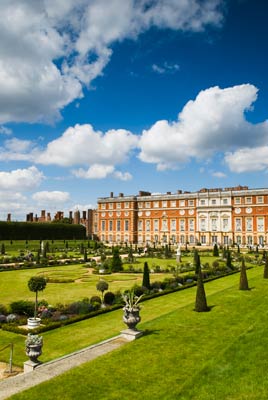
Katherine certainly lived up to her motto, “To be useful in all I do.” She acted as Queen Regent while Henry embarked on a last, brief military hurrah in France in 1544 and she sensitively drew together all three of his children, Mary, Elizabeth and Edward, taking a close interest in their education.
More controversially, she began developing radical Protestant opinions that verged on the heretical. Only her quick wits when she overstepped the mark saved her from arrest: she argued that she sought to divert the king from his painful thrombosis through lively theological discussion!
When Henry died on 28 January 1547, Katherine hastily rekindled her romance with Seymour, married and retired pregnant to the Seymour home at Sudeley Castle. But she died following the birth of her daughter, in September 1548. Katherine received the first-ever Protestant royal funeral and her tomb is in St Mary’s Church in the castle’s beautiful gardens.
Henry VIII’s six wives, had six very different characters who influenced the king and history in a tale full of ‘what ifs’ and ironies. Not least is the irony that, despite Henry’s hankering for male heirs, his daughter by Anne Boleyn would prove to be one of England’s greatest monarchs: Elizabeth I.





 © 2024
© 2024